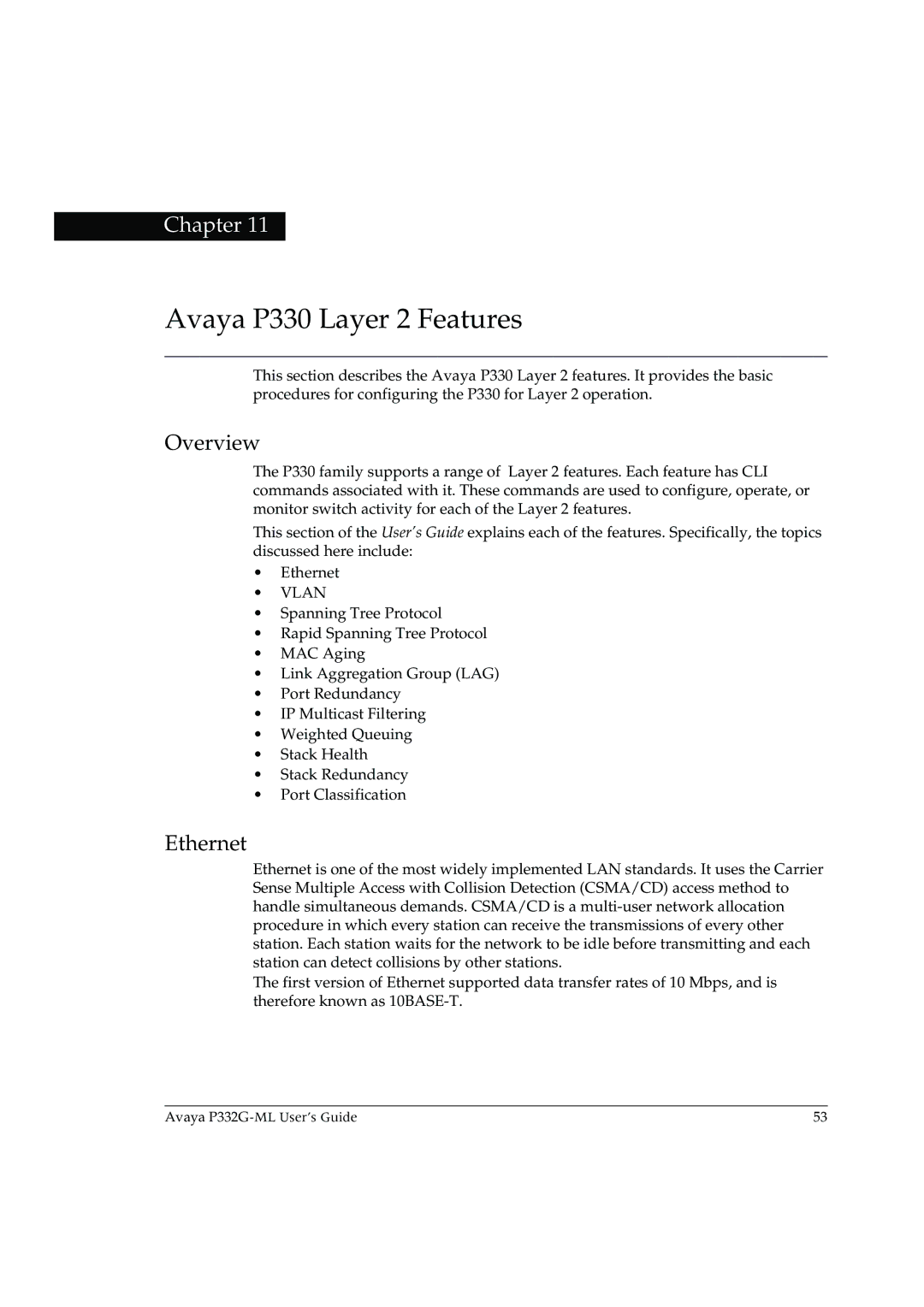
Chapter 11
Avaya P330 Layer 2 Features
This section describes the Avaya P330 Layer 2 features. It provides the basic procedures for configuring the P330 for Layer 2 operation.
Overview
The P330 family supports a range of Layer 2 features. Each feature has CLI commands associated with it. These commands are used to configure, operate, or monitor switch activity for each of the Layer 2 features.
This section of the User’s Guide explains each of the features. Specifically, the topics discussed here include:
•Ethernet
•VLAN
•Spanning Tree Protocol
•Rapid Spanning Tree Protocol
•MAC Aging
•Link Aggregation Group (LAG)
•Port Redundancy
•IP Multicast Filtering
•Weighted Queuing
•Stack Health
•Stack Redundancy
•Port Classification
Ethernet
Ethernet is one of the most widely implemented LAN standards. It uses the Carrier Sense Multiple Access with Collision Detection (CSMA/CD) access method to handle simultaneous demands. CSMA/CD is a
The first version of Ethernet supported data transfer rates of 10 Mbps, and is therefore known as
Avaya | 53 |
